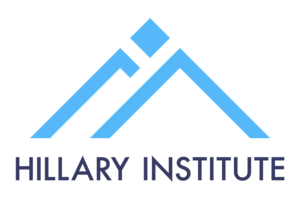Buying a home is one of the most exciting financial steps you can take—but it’s also one of the most complex. Between inspections, down payments, and closing costs, there’s a lot to think about. One of the most important aspects of the homebuying process is understanding your mortgage. Knowing how a mortgage works can help you make informed decisions, avoid common pitfalls, and ultimately feel more confident about your investment.
Mortgage terms, rates, and approval processes can vary widely depending on your financial profile and the lender you choose. At its core, a mortgage is a loan you take out to buy a home, with the property itself serving as collateral. That means if you can’t keep up with the monthly payments, the lender has the right to take back the home through foreclosure. There are different types of mortgages, including fixed-rate, adjustable-rate (ARM), FHA, VA, and USDA loans. Each comes with its own pros, cons, and eligibility requirements, so it’s crucial to compare options.
Fixed-rate mortgages are a popular choice because they offer consistency—the interest rate and monthly payment stay the same over the life of the loan, which is typically 15, 20, or 30 years. On the other hand, adjustable-rate mortgages might offer a lower initial interest rate but can increase after a set period, leading to higher payments over time. Government-backed loans like FHA, VA, and USDA loans offer lower down payment options or reduced credit score requirements, making them great for first-time or low-to-moderate-income buyers.
Before applying for a mortgage, it’s essential to get your finances in order. That means checking your credit score, paying down high-interest debt, and saving for a down payment. Lenders typically prefer borrowers with a credit score of at least 620, though higher scores can help you secure better interest rates. The amount you’ll need for a down payment can vary, but many lenders look for 5–20% of the home’s purchase price. Some loans allow for as little as 3% down, though you may need to pay for private mortgage insurance (PMI) if your down payment is under 20%.
Another key element to understand is your debt-to-income (DTI) ratio, which measures how much of your monthly income goes toward debt payments. Most lenders prefer a DTI under 43%, though some may accept higher ratios depending on the loan program. Keeping your debt manageable and your income steady will help you qualify for a better mortgage and make monthly payments more comfortable.
The mortgage approval process typically begins with pre-approval, which gives you an estimate of how much a lender is willing to let you borrow. This can make you a more attractive buyer and help you shop within your budget. Once you make an offer on a home and it’s accepted, the lender will conduct a more detailed underwriting process to verify your income, assets, and creditworthiness before issuing final approval.
Don’t forget to factor in closing costs, which usually range from 2–5% of the loan amount. These include fees for appraisals, inspections, title insurance, and loan origination. You’ll also want to consider ongoing homeownership expenses such as property taxes, homeowners insurance, and maintenance.
Understanding your mortgage is more than just knowing your monthly payment—it’s about seeing the bigger financial picture. The right mortgage can make homeownership affordable and sustainable, while the wrong one can lead to financial strain. Take your time, ask questions, and work with a lender or mortgage advisor who takes the time to explain your options.
At GetEvolved.com, we believe buying a home should be empowering, not overwhelming. With the right tools and information, you can make smart choices and move into your dream home with confidence.



 Commerce Commission: ComCom Warns Of Pyramid Schemes After South Auckland Scammers Plead Guilty
Commerce Commission: ComCom Warns Of Pyramid Schemes After South Auckland Scammers Plead Guilty MBIE: MBIE Publish Mid-Point Review Of The Phase-Out Of The Low Fixed Charge (LFC)
MBIE: MBIE Publish Mid-Point Review Of The Phase-Out Of The Low Fixed Charge (LFC) Science Media Centre: Company Claims To Have “De-Extincted” The Dire Wolf – Expert Reaction
Science Media Centre: Company Claims To Have “De-Extincted” The Dire Wolf – Expert Reaction Stats NZ: Greenhouse Gas Emissions Fall 2.0 Percent In The December 2024 Quarter
Stats NZ: Greenhouse Gas Emissions Fall 2.0 Percent In The December 2024 Quarter The Reserve Bank of New Zealand: Christian Hawkesby Appointed As Governor Of The RBNZ
The Reserve Bank of New Zealand: Christian Hawkesby Appointed As Governor Of The RBNZ Kiwi Economics: It’s Mayhem In Markets As Downside Risks Dominate Following Trump’s Tariffs
Kiwi Economics: It’s Mayhem In Markets As Downside Risks Dominate Following Trump’s Tariffs



